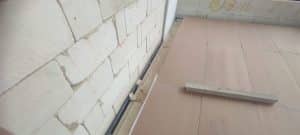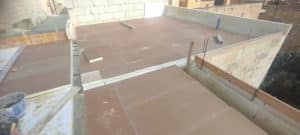When it comes to modern renovations in Malta, many homeowners are asking the same question: can microcement be applied over tiles? The answer is a resounding yes! And not only is it possible—it’s one of the most practical and stylish renovation solutions out there today. Whether you’re looking to upgrade your bathroom, kitchen, or commercial space, microcement offers a seamless transformation without the hassle of tearing out old tiles.
This blog will walk you through everything you need to know—from technical application to design benefits—while answering the question: can microcement be applied over tiles effectively, efficiently, and beautifully?
Let’s break down the top reasons why this innovative material might just be the renovation solution you didn’t know you needed.
What Is Microcement—and Why It’s Revolutionizing Renovations in Malta| Can Microcement Be Applied Over Tiles
Before we dive into the application process, let’s first explore what microcement actually is. Microcement (also called microconcrete or microtopping) is a high-performance coating made from cement, water-based resins, additives, and mineral pigments. It’s applied in thin layers—usually 2–3 mm thick—making it an ideal material for resurfacing existing surfaces like ceramic tiles, stone, wood, plaster, and even concrete.
The beauty of microcement lies in its versatility. It offers a seamless, joint-free surface with an elegant, minimalist aesthetic that suits both modern and rustic designs. Microcement is:
Highly durable and resistant to abrasion
Moisture-resistant, ideal for bathrooms and kitchens
Easy to maintain and clean
Available in a variety of colours and textures
In Malta, where humidity, heat, and architectural variety are all factors, microcement is fast becoming the go-to for both homeowners and construction professionals.
Can Microcement Be Applied Over Tiles? Absolutely—Here’s How It Works| Can Microcement Be Applied Over Tiles
The short answer again: yes, microcement can be applied over tiles. No demolition. No dust. No days or weeks of disruptive construction. You’re essentially giving your walls or floors a sleek, modern facelift with minimal downtime.
Here’s how the process usually goes:
1. Tile Cleaning and Degreasing
Before applying anything, the tiles must be meticulously cleaned. Any dust, grease, or residue can affect adhesion. A thorough degreasing solution is used to prepare the tiled surface.
2. Grout Line Filling and Levelling
Because tiles typically have visible grout lines, these need to be filled in to create a flat, even base. A special filler is applied to level out the surface and prevent the grout lines from showing through the final microcement layer.
3. Application of Primer
Once the surface is even, a bonding primer is applied. This ensures that the microcement adheres properly to the tiles and prevents lifting or cracking.
4. Reinforcement Mesh (Optional but Recommended)
Especially on tiled floors or large surfaces, a fiberglass mesh may be embedded to add strength and flexibility to the microcement layer.
5. Application of Microcement Layers
Usually, two to three layers of base microcement are applied, followed by two thin finishing layers. Each layer is sanded before the next is added to achieve a smooth texture.
6. Sealing and Protection
Finally, a sealant (matte, satin, or gloss finish) is applied to protect the surface from water, stains, and wear.
The entire process takes about 4–5 days depending on the size of the area—much faster than a full demolition and retile job.
Why Applying Microcement Over Tiles Is a Smart Move in Malta| Can Microcement Be Applied Over Tiles
The decision to apply microcement over tiles isn’t just about saving time—though that’s a big perk. It’s about smarter renovation that respects your budget, your time, and your space. Here are the top five reasons to choose this method:
1. No Demolition Required
Traditional renovations involve ripping out old tiles—a process that’s loud, dusty, and time-consuming. With microcement, you avoid all that. The material is applied directly over existing tiles, saving days (or even weeks) of labour.
2. Cost-Effective Modernisation
Because there’s no need to pay for tile removal and disposal, labour costs are significantly reduced. On average, microcement installation in Malta starts at around €65 per square metre, depending on complexity and finish. Compare that to the full cost of tile removal + new tile + grout + labour, and you’ll see real savings.
3. Ideal for Wet Areas
Microcement is naturally water-resistant when sealed, making it a top choice for:
Bathrooms
Shower enclosures
Kitchen backsplashes
Laundry rooms
And yes—it’s perfectly safe for high-moisture environments, even over tiles.
4. Customisable Aesthetic
Want the raw beauty of concrete? Or the warm tones of natural stone? Microcement can mimic both and more. Choose from smooth or textured finishes, glossy or matte sealants, and dozens of colours that match your décor.
5. Durable and Low-Maintenance
When properly applied and sealed, microcement lasts for years with minimal upkeep. It’s resistant to:
Scratches
UV exposure
Humidity and mould
Cleaning chemicals (mild ones)
Cleaning it? Just a pH-neutral soap and water will do the trick.
Where in Malta Does It Make the Most Sense?| Can Microcement Be Applied Over Tiles
Malta’s unique climate and construction styles make microcement an especially practical option for a variety of spaces.
✅ Traditional Homes and Farmhouses
Want to modernise without compromising the charm of your traditional stone house? Microcement adds a smooth, updated surface while preserving the structure beneath.
✅ Modern Apartments and Condos
Tired of glossy tiles that feel outdated? Microcement offers a continuous, luxurious feel underfoot that aligns perfectly with modern design.
✅ Commercial Spaces
Gyms, spas, clinics, and showrooms in Malta are increasingly choosing microcement for its clean look, fast installation, and easy maintenance.
Environmental Benefits of Choosing Microcement| Can Microcement Be Applied Over Tiles
You might be wondering—if you’re covering up old tiles, isn’t that just adding more material on top?
Actually, microcement is one of the most sustainable finishing materials on the market:
No waste: No tiles to dispose of = less landfill contribution
Eco formulations: Many brands use water-based resins and low-VOC pigments
Long life cycle: Its durability means fewer replacements and less resource use over time
If you’re considering a green renovation, this is a fantastic place to start.
How Does It Feel Underfoot?| Can Microcement Be Applied Over Tiles
This is one of the most frequently asked questions we hear. When applied over tiles, microcement creates a smooth and continuous surface. There are no grooves or grout lines, which means:
It’s more comfortable to walk on barefoot
There’s no space for dirt or mould to gather
It’s easier and faster to clean
You can also customise the texture! Want a slightly grippy surface for a bathroom? That’s easy. Prefer a satin-smooth feel for a living room? Also doable.
Can You Apply It Yourself?| Can Microcement Be Applied Over Tiles
While DIY microcement kits do exist, applying microcement over tiles requires careful surface prep and multi-layer application. It’s a job best left to professionals to avoid bubbling, cracking, or uneven texture.
Here in Malta, our trained installers at Kibitec can handle every step of the process for you—from consultation to flawless finish.
5. Saves Time and Money| Can Microcement Be Applied Over Tiles
Renovations can be time-consuming, messy, and expensive—especially if demolition is involved. But when it comes to microcement, things are refreshingly different.
Because microcement can be applied over tiles, you avoid:
Labor-intensive tile removal
Additional disposal costs
Downtime caused by structural interventions
Instead, your installer can start working directly over the tiled surface, often completing a bathroom or kitchen in just a few days. That translates to lower labour fees and faster project turnaround—two things every Maltese homeowner or developer appreciates.
Cost Savings Breakdown:
Demolition savings: €300 to €700 depending on space size
Waste disposal: €50 to €150
Labour time saved: ~30–40%
Total project savings: €400 to €1,000 or more
In Malta, where property renovations are frequent and real estate value matters, these savings are especially valuable.
6. Long-Lasting and Durable| Can Microcement Be Applied Over Tiles
One of the misconceptions people have is that microcement is just a cosmetic overlay. That’s not true. When properly installed, microcement creates a hard, abrasion-resistant surface that stands the test of time—even on top of tiles.
It’s made with cement, polymers, and mineral pigments, which gives it a high-performance profile. In Malta, where humid conditions and temperature changes can affect materials, microcement holds its ground remarkably well.
Real-World Performance:
Scratch resistant
UV resistant
Withstands high foot traffic
Non-porous when sealed properly
The longevity also reduces the need for frequent refurbishments—saving you more money long-term.
7. Seamless Finish With Modern Appeal
Traditional tiles come with grout lines, which can get dirty, crack, or grow mould. Microcement eliminates all of that.
When you apply microcement over tiles, the result is:
Seamless, continuous surface
No joints or grout
Smoother cleaning and maintenance
Visually modern and sleek
Whether it’s for a Maltese villa in Gozo or a modern flat in Sliema, this finish brings a high-end aesthetic without the typical construction hassle.
Final Thoughts: Is Microcement Worth It Over Tiles?
Absolutely. The keyword here is efficiency—in time, cost, and design flexibility. So if you’re asking yourself, can microcement be applied over tiles, the answer is a confident yes.
With no need to tear up floors or walls, and with a beautiful modern finish, microcement is ideal for:
Kitchen splashbacks
Bathroom floors and walls
Outdoor patios
Commercial retail spaces
And with prices starting around €65 to €120 per square metre, it’s a cost-effective choice that doesn’t compromise on quality.
If you’re ready to transform your tiled space with minimal disruption, contact us today. At Kibitec, we offer professional microcement services across Malta and Gozo, tailored to your unique needs.
Want More Info?
If you’re involved in any form of construction or planning a renovation, microcement offers versatility and performance unmatched by traditional options.
Whether you’re starting a new project or upgrading an existing space, Kibitec is here to help. Reach out to our expert team today: https://kibitec.com/contact-us/.




